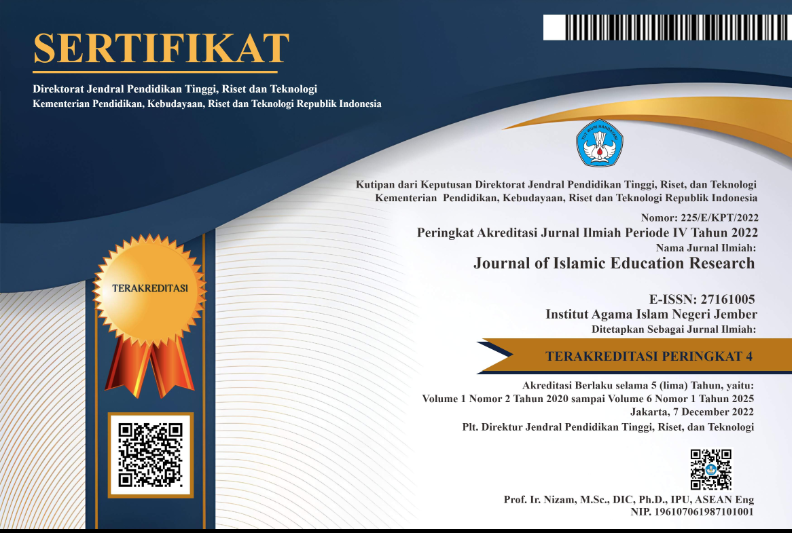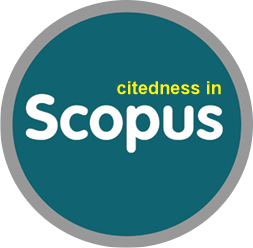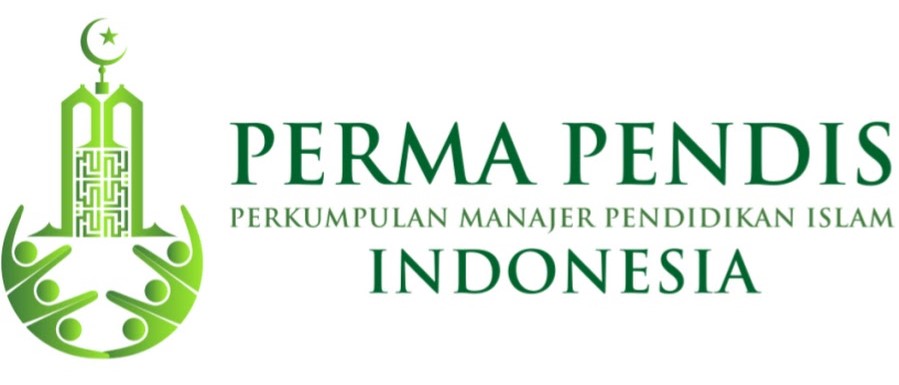Evaluation of Learning Media Quality for Islamic Religious Education at Kadiri University, Indonesia
DOI:
https://doi.org/10.35719/jier.v6i1.465Keywords:
Evaluation, Learning Media Quality, Islamic Religious EducationAbstract
This study aims to evaluate the quality of learning media used in the Islamic Religious Education course at Kadiri University, Indonesia. The evaluation focuses on the learning media and supporting facilities within the classroom, including projectors, screens, audio systems, and physical conditions such as seating, room temperature, and elevator accessibility. A qualitative descriptive approach based on Miles and Huberman's model was employed, with data collected through direct observation and in-depth interviews involving five students from the Faculty of Health Sciences who attended the course during the odd semester. The findings reveal that the quality of learning media and facilities generally supports an effective and comfortable learning environment. Well-functioning projectors, audio systems, and comfortable seating are key factors in facilitating the learning process. The availability of an elevator also enhances mobility for students and lecturers between floors, contributing to smoother lecture activities. However, several issues were noted, including deteriorating chair conditions and inconsistent air conditioning performance in some instances. This study highlights the importance of routine maintenance to ensure the quality of classroom facilities and optimize the learning experience. Furthermore, it opens avenues for future research on the relationship between facility quality, student learning outcomes, and the integration of advanced technology in learning media for Islamic Religious Education.
Downloads
References
Abdullah, S. N. B., binti Alias, B. S., & bin Nordin, M. N. (2024). The Impact Of Facilities Management Among School Leaders On Special Need Students’s Achievement: A Review. Educational Administration: Theory and Practice, 30 (4), 10017-10020. https://doi.org/10.53555/kuey.v30i4.6168
Al Horr, Y., Arif, M., Katafygiotou, M., Mazroei, A., Kaushik, A., & Elsarrag, E. (2023). Impact of indoor environmental quality on occupant well-being and comfort: A review of recent advances. Building and Environment, 185, 107360. https://doi.org/10.1016/j.buildenv.2023.107360
Baroudi, S., & Rodjan Helder, M. (2019). Behind the scenes: teachers’ perspectives on factors affecting the implementation of inquiry-based science instruction. Research in Science & Technological Education, 39(1), 68–89. https://doi.org/10.1080/02635143.2019.1651259
Bradley, J. S., Gover, B. N., & Norcross, S. G. (2021). Acoustic design of classrooms and its impact on students’ learning outcomes. Journal of Acoustical Society of America, 150(5), 3567-3578. https://doi.org/10.1121/10.1002/jasa.2021
Dahlia. (2018). Manajemen Sarana Prasarana Dalam Meningkatkan Mutu Kualitas Institut Agama Islam Daar Ulum Kabupaten Asahan. Manajemen Pendidikan Islam, 2(2), 89. http://dx.doi.org/10.30821/benchmarking.v2i2.6941
Djazilan, M. S., & Hariani, M. (2022). Implementation of E-Learning-Based Islamic Religious Education. Bulletin of Science, Technology and Society, 1(2), 14–21. https://inti.ejournalmeta.com/index.php/inti/article/view/12
Huda, C., Hanief, M., & Hakim, D. (2022). Islamic Religious Education Learning Strategy with Edutainment Insight in Improving Learning Motivation of Student. Nazhruna: Jurnal Pendidikan Islam, 5(2), 787-805. https://doi.org/10.31538/nzh.v5i2.2247
Kirupainayagam, D. S., & Sutha, J. (2022). Technology facilitation on inclusive learning; higher education institutions in Sri Lanka. International Journal of Educational Management, 36(4), 441-469. https://doi.org/10.1108/IJEM-02-2020-0048
Kuleto, V., Ili?, M., Dumangiu, M., Rankovi?, M., Martins, O. M., P?un, D., & Mihoreanu, L. (2021). Exploring opportunities and challenges of artificial intelligence and machine learning in higher education institutions. Sustainability, 13(18), 10424. https://doi.org/10.3390/su131810424
Lunke, M., Johansen, T., & Skaar, B. (2022). The influence of multimedia and technology-enhanced teaching on student engagement in higher education. Educational Technology Research and Development, 70(3), 715-735. https://doi.org/10.1007/s11423-022-10091-5
Miles, M., Huberman, M., & Saldana, J. (2013). Qualitative Data Analysis (3rd ed.). SAGE Publications.
Muazza, M., Mukminin, A., Habibi, A., Hidayat, M., & Abidin, A. (2018). Education in Indonesian Islamic Boarding Schools: Voices on Curriculum and Radicalism, Teacher, and Facilities. Islamic Quarterly, 62(4), 507-536.
Nasir, M., & Rijal, M. K. (2021). Keeping the middle path: mainstreaming religious moderation through Islamic higher education institutions in Indonesia. Indonesian Journal of Islam and Muslim Societies, 11(2), 213-241. https://doi.org/10.18326/ijims.v11i2.213-241
Nopembri, S., Shahril, M. I. B., & Marta, I. A. (2024). Students' performance level, teachers' mastery of materials, and implementation of fundamental motor skills: A sequential explanatory mixed-method study. Journal of Physical Education and Sport, 24(6), 1487-1498. http://efsupit.ro/images/stories/june2024/Art%20168.pdf
Norman, A. (2023). Educational technology for reading instruction in developing countries: A systematic literature review. Review of Education, 11(3), e3423. https://doi.org/10.1002/rev3.3423
Othman, M. R., Zahari, R., Suhidin, F., Sanusi, S., & Hai, J. O. (2024). Facilities Maintenance Employees’ Adherence of Safety Management Practices: A Research Study at Higher Education Institutions in Malaysia. International Journal, 6(1), 1-12. https://ijor.co.uk/ijor/article/view/8169
Petraki, E., & Khat, K. (2020). Challenges and constraints in the design of an ESP course in Cambodia: implications for higher education institutions. Asia Pacific Journal of Education, 42(2), 260–275. https://doi.org/10.1080/02188791.2020.1798738
Ribeiro, P. J., Gonçalves, H., & Oliveira, D. (2023). Ergonomic improvements in classroom furniture design for enhanced student comfort. International Journal of Industrial Ergonomics, 91, 103281. https://doi.org/10.1016/j.ergon.2023.103281
Roy, S., Huq, S., & Rob, A. B. A. (2020). Faith and education in Bangladesh: A review of the contemporary landscape and challenges. International Journal of Educational Development, 79, 102290. https://doi.org/10.1016/j.ijedudev.2020.102290
Saada, N. (2023). Educating for Global Citizenship in Religious Education: Islamic Perspective. International Journal of Educational Development, 103, 102894. https://doi.org/10.1016/j.ijedudev.2023.102894
Sahin, A. (2018). Critical Issues in Islamic Education Studies: Rethinking Islamic and Western Liberal Secular Values of Education. Religions, 9(11), 335. https://doi.org/10.3390/rel9110335
Singh, P., Gupta, R., & Kumar, S. (2023). Universal Design and Accessibility: Inclusive Approaches in Educational Environments. Sustainable Cities and Society, 98, 103469. https://doi.org/10.1016/j.scs.2023.103469
Susiani, K. (2022). Pengelolaan Fasilitas dan Prasarana di Sekolah: Studi Perbandingan Untuk Meningkatkan Kualitas Pendidikan Dasar. Jurnal Penjaminan Mutu, 8(02), 173–184. https://doi.org/10.25078/jpm.v8i02.912
Taja, N., Nurdin, E. S., Kosasih, A., Suresman, E., & Supriyadi, T. (2021). Character education in the pandemic era: A religious ethical learning model through Islamic education. International Journal of Learning, Teaching and Educational Research, 20(11), 132-153. http://www.ijlter.net/index.php/ijlter/article/view/724
Wakhidah, N., & Erman, E. (2022). Examining Environmental Education Content on Indonesian Islamic Religious Curriculum and its Implementation in Life. Cogent Education, 9(1). https://doi.org/10.1080/2331186X.2022.2034244
Downloads
Published
How to Cite
Issue
Section
License
Copyright (c) 2025 Titin Widya Risni, Mochammad Danara Indra Pradigta, Pamadya Vitasmoro, Shahzadi Hina

This work is licensed under a Creative Commons Attribution-ShareAlike 4.0 International License.















